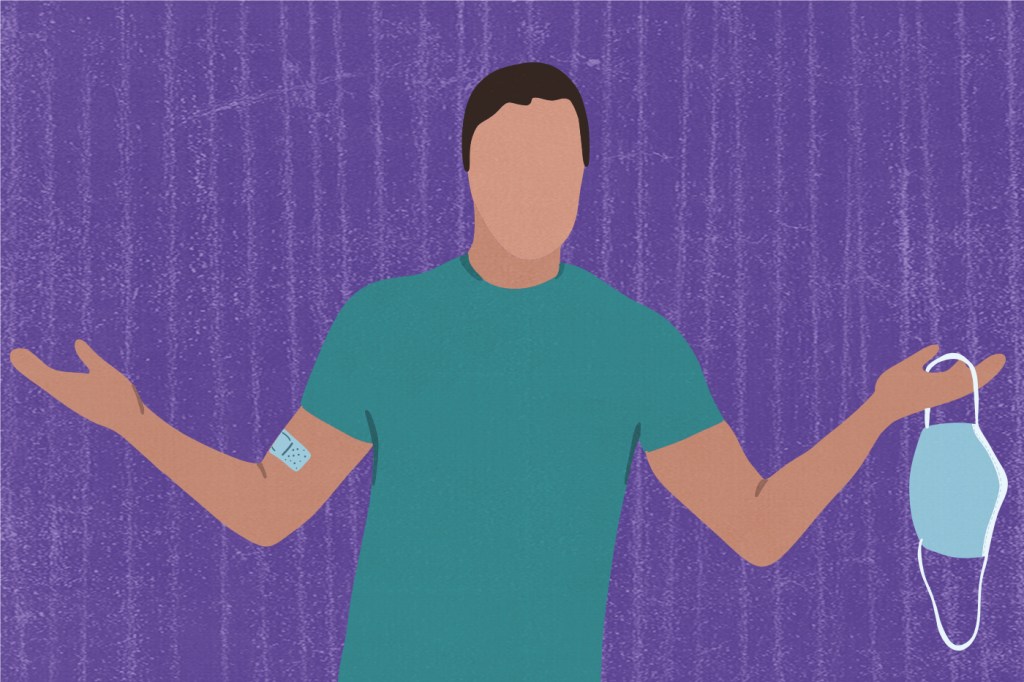New coronavirus variants might prolong the COVID-19 pandemic despite vaccinations

The fight to end the pandemic has become a race against formidable opponents: variants.
Variants of SARS-CoV-2, the coronavirus that causes COVID-19, are already proliferating around the world, complicating the fight to subdue the pandemic. In the U.S., a highly contagious variant of the coronavirus is now the dominant strain, and it’s helping drive a surge in cases of COVID-19 across the nation. Other, more transmissible variants are also spreading in the U.S., and public health experts have warned that more variants may still yet emerge.
Although the vaccines being administered offer hope, it’s not yet time to stop and celebrate, says Neil Maniar, associate chair of the Department of Health Sciences at Northeastern. “We’re not at the finish line yet.”

Left to right: Jared Auclair is director of biotechnology and bioinformatics in the College of Science and runs the Life Science Testing Center at Northeastern’s Innovation Campus; Neil Maniar is director of the Master of Public Health program and a professor of the practice in the Bouvé College of Health Sciences; and Brandon Dionne is an assistant clinical professor of pharmacy and health systems sciences in the Bouvé College of Health Sciences at Northeastern. Photos by Matthew Modoono and Adam Glanzman/Northeastern University
The goal, he says, is to prevent the spread of those variants when they pop up, because failure to do so could lead to the emergence of more variants, perhaps even strains that can dodge the protection of current vaccines. “Viruses are constantly replicating, and as they’re replicating, it’s highly likely that mutations will develop,” Maniar says. And that’s one of the big reasons why public health officials have been working to vaccinate the population to a level that will achieve herd immunity to stop that process in its tracks.
The more contagious variant of the virus first identified in the U.K—the B.1.1.7 variant—has become the dominant source of new COVID-19 cases in the U.S, according to the U.S. Centers for Disease Control and Prevention. As of Monday, scientists had determined that the B.1.1.7 variant was the cause of more than 20,000 cases in the country. And it’s not alone. Variants first identified in South Africa and Brazil, dubbed B.1.351, and P.1. respectively, also seem to be more contagious and have been identified in most states across the U.S. Additional new variants have also been identified in New York and California recently. And the B.1.1.7 strain already may be mutating into a new strain in Oregon, too.
The vaccines currently approved in the U.S. seem to be very effective against the B.1.1.7 variant, says Brandon Dionne, assistant clinical professor of pharmacy and health systems sciences at Northeastern. But there’s a lot less data about the efficacy of the vaccines against the other known variants.
It’s likely that the vaccines are less effective—though not entirely ineffective—at preventing infection in the face of the B.1.351 and P.1 variants, Dionne says. And that isn’t necessarily cause for concern.
That’s because these vaccinations are probably very effective at keeping people out of the hospital and effective enough at preventing symptomatic disease, which makes someone much more likely to transmit the virus.
“The good thing about the vaccine is that even if it is not as effective against those variants, in theory, it should prime your immune system so that at least the severity of the disease will cause less hospitalizations and deaths,” says Jared Auclair, who runs Northeastern’s COVID-19 testing facility, the Life Sciences Testing Center.
The information that we already have seems to support that. For example, the Pfizer-BioNTech vaccine has also been tested in South Africa, and the companies reported that their vaccine is 91 percent effective there, compared to 95 percent in its original trial. An independent study in Israel publicized over the weekend found evidence that corroborates the idea that the vaccine provides less protection against that B.1.351 variant. Although the Johnson & Johnson vaccine is currently mired in controversy and its shots have largely been suspended across the U.S., it also was studied in South Africa and its efficacy there was 57 percent, compared to 72 percent in the United States.
Reduced efficacy could mean that the threshold for herd immunity, considered by most epidemiologists to be about 80 percent of the population, will need to be higher. That adds to the urgency around getting people vaccinated, Dionne says. Because the longer the virus is spreading throughout the world, the more variants will emerge.
“If you have reduced efficacy, you have more symptomatic cases, likely more transmission, and more opportunities for the virus to mutate and create new variants that then can further escape the immune response to the vaccine,” Dionne says. “That is, I think, the ultimate concern.”
The threat of a new variant that evades the protection of existing vaccines may evoke a nightmare scenario that could set us back to March 2020—or earlier. But drug companies wouldn’t actually have to start at square one if that were to come to pass.
“Some of these technologies, like the mRNA vaccine technologies, can be updated very quickly and changed,” Dionne says. “So as long as they have the RNA code for the mutated spike proteins in these new variants, then they could develop a new vaccine fairly quickly as well.” Moderna, and Pfizer and BioNTech are currently conducting research on the potential for such booster shots.
To keep tabs on the variants, researchers like Auclair are fully sequencing the viral samples from positive tests that pass through their laboratories. The work is painstaking, but it could help reveal vital clues about emerging variants. If someone who is vaccinated tests positive, for example, that could help public health officials stop another epidemic.
As a result, it’s likely that governments and institutions will continue to do some level of surveillance testing, even as vaccination rates rise, Maniar says. This will also help public health officials monitor the safety of reopening measures. “This is one of the things where it’s really important that we continue to keep our finger on the pulse of what’s going on.”
Even people who have been fully vaccinated should continue wearing masks, social distancing, and practicing good hygiene, Maniar says. Although CDC guidelines permit people who are fully vaccinated to take their masks off around other people who are fully vaccinated, he explains, they need to be aware that they could be asymptomatically carrying the virus or one of these variants and could transmit it to someone who is not fully vaccinated. (Someone is considered fully vaccinated two weeks after their second shot of the two-shot vaccines or two weeks after the single-shot vaccine.)
The presence of variants underscores the continued need for vigilance, Maniar says. “We need to continue to practice safe behaviors. We need to wear masks, socially distance when we’re around others, wash our hands,” he says. “We can’t let our guard down.”
For media inquiries, please contact media@northeastern.edu.





